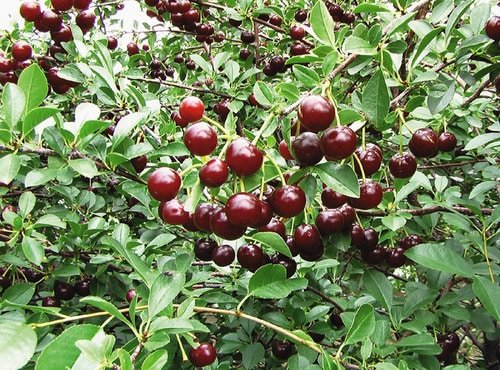
Backyard orchardists, sit up and pay attention!
Finally, after 50 years of breeding work, a series of dwarf, shrubby, sour and sweet cherries hardy to Zone 3 has been developed at University of Saskatchewan.
One example in the Romance Series is ‘Juliet’, a dark red, 0.17-ounce (5-g) cherry with thick flesh and high sugar content, a sweet cherry for fresh eating. The shrubs have few suckers and produce 22 to 33 pounds (10 to 15 kg) of fruit per shrub at maturity. Small plants purchased by mail order (veseys.com) can be expected to begin producing fruit in three years. Larger plants purchased through nurseries (in Ontario, Siloam Orchards, 905-852-9418, [email protected]) can be productive in less time.
The great advantage to the cherries in this series is that all parts of the plants are accessible from ground level. Getting protective bird netting over and around the plants heavy with fruit is easy, and if any kind of spray needs to be applied (such as sulphur, kelp or other foliar fertilizer), a simple hand sprayer will do the job. And, of course, harvesting will be quick and easy, too.
‘Juliet’ cherries are dark red at the beginning of their ripening phase. They can be picked at that colour, but the fruits will continue to sweeten if left on the bush to darken further and continue to be good for fresh eating. If allowed to remain until desiccated like raisins, their sugar will be even more concentrated; the dried cherries can be used for cereal and baking.
‘Juliet’ is one of five dwarf cherries in the series, which includes fresh-eating ‘Crimson Passion’, ‘Cupid’ and ‘Romeo’, and tart pie cherry ‘Valentine’. Now, isn’t that just enough to get you looking around the corner for spring?









Will a Juliet pollinate a Van?
no…..these are not technically sweet cherries…they are tart cherries bred to be sweeter…so no they will not pollinate a Van which is a sweet cherry
If I’m not in a real cold climate, like winters are only occasionally below 20 degrees F, would these produce well?
Thank you.
yes….they are very hardy…I grow them…I recommend good drainage…..if you have clay soil youmay need to plant on high area or put in a raised box 2×2 or 3×3 feet..use your native soil…nothing too rich or unusual if you are making a mix…you can amend it but I would suggest largely just your own soil…unless you have terrible soil. and do not feed them for the first year or two….except maybe a handful of bonemeal in the hole when you plant them…once established you can fertilize them and they will take off…the first year or two they might appear to be slow growing_maybe not…but they will take off in the third year and will tolerate fertilization better at that stage.
Hi Judith,
Re your dwarf cherry article, I know that there is a dwarf Stella sweet cherry which is self pollinating, but you do not say if that is the case with the new ones. If so that is a real breakthrough. Can you enlighten me, please?
thanks,
David Marshall
From Judith Adam:
Yes, these new shrub cherries (developed in Canada) are described as self-pollinating. Here is a nursery description: http://search.millcreeknursery.ca/11050005/Plant/5198/Juliet_Cherry.
These cherries are a cross between European sour cherries (pie cherries) and a Mongolian cherry. The latter has a small bitter fruit only a bird could love, but supplies winter hardiness. These cherries are naturally dark ranging from medium red to almost black — no food coloring needed, unlike conventional pie cherries, with their pale fruit.